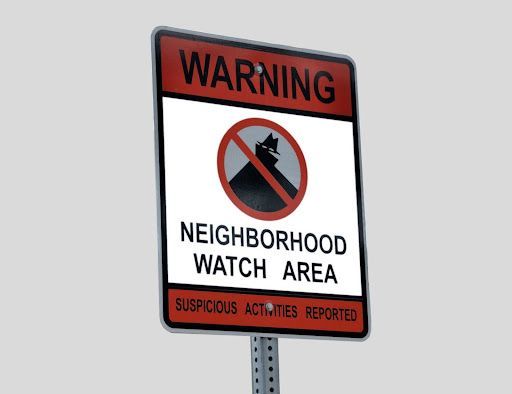Navigating the Future: The Impact of Advanced Security Technologies
Embark on a journey into the future of security with an exploration of advanced technologies and their impact. From enhanced surveillance systems to cutting-edge access control measures, readers will discover the transformative potential of incorporating advanced security technologies into their environments. By understanding the benefits and possibilities, individuals and organizations can better navigate the ever-evolving realm of security in the modern world.
The Evolution of Security Technology
Security technology has undergone a significant change over the years, shifting from basic mechanical locks and alarms to sophisticated electronic systems. Previously, traditional security measures were limited to physical barriers and human intervention. These methods, although effective in their time, bore limitations in scope and efficiency. Today, the adoption of advanced technological solutions has revolutionized how security is approached, offering smarter, scalable, and more responsive security systems. This transition underscores the critical impact emerging technologies have on enhancing security measures.
The Role of AI in Next-Gen Security
Artificial Intelligence (AI) has emerged as a cornerstone in the latest generation of security technologies. By harnessing the power of AI, security systems are becoming more adept at detecting potential threats and anomalies that human surveillance might miss. AI applications in security span a broad spectrum, including real-time video analysis, facial recognition, and automated alert systems. For instance, AI-powered facial recognition technology is not just about identifying individuals; it can also detect suspicious behaviors and send instant alerts to security personnel. Anomaly detection leverages AI algorithms to sift through vast amounts of data and identify patterns that deviate from the norm, thus enabling quicker responses to potential security breaches.
The Advancement through IoT Devices
The Internet of Things (IoT) has brought about a revolution in the security domain by interconnecting a wide range of devices into a single, integrated network. IoT devices, including sensors, smart locks, and surveillance cameras, work in tandem to provide a comprehensive security solution that can preempt and respond to threats in real time. The proliferation of these devices has not only expanded the scope of security operations but has also introduced new dynamics in terms of system management and data analysis. The integration of IoT in security comes with its set of challenges, primarily related to data privacy and system security, underscoring the need for robust protective mechanisms to secure the IoT ecosystem. Examples of IoT implementation in security abound, from smart locks that can be remotely controlled to sensors that detect window or door breaches.
As security technologies continue to evolve, the role of AI and IoT devices will only become more pivotal. These advancements promise to offer smarter, more efficient, and highly adaptable security solutions, marking a significant leap forward in the field of security.
Cyber-Physical Systems: Blending the Digital with the Physical
Cyber-Physical Systems (CPS) represent the integration of computation, networking, and physical processes. Within the realm of security, CPS is proving indispensable, offering capabilities that blend the digital with the physical to enhance security measures. This integration enables systems to interpret data from the physical world, process it through computational logic, and act upon it in real time, thereby revolutionizing traditional security protocols. For instance, CPS is instrumental in predictive maintenance, where systems can forecast potential security equipment failures before they occur, allowing for preemptive action to mitigate risks. In the event of a security incident, CPS facilitates swift and informed responses, thereby minimizing impact.
Challenges in Implementing Emerging Security Technologies
Despite the promising advantages offered by next-gen security technologies, their implementation is not without challenges. One of the primary concerns is the financial implications. The costs associated with acquiring, deploying, and maintaining advanced security technologies can be substantial, especially for small to medium-sized enterprises. There’s a significant training requirement and skills gap that organizations face when adopting these technologies. Personnel must be adequately trained not only on how to operate these advanced systems but also on how to effectively respond to the data and alerts they generate.
Security and privacy concerns are further amplified with the introduction of AI and IoT in security frameworks. The vast amounts of data generated and processed by these technologies escalate the risks associated with data breaches and misuse. Ensuring the security of the systems themselves, along with the privacy of the data they handle, becomes an added layer of complexity in the deployment of next-gen security solutions.
The challenges of integrating AI, IoT, and CPS into existing security infrastructures highlight the need for a balanced approach that considers both the potential benefits and inherent risks. Addressing the financial barriers, bridging the skills gap, and establishing stringent security and privacy protocols are essential steps in ensuring the successful adoption of these emerging security technologies. As we navigate these challenges, the promise of a smarter, more responsive security landscape remains within reach, offering a glimpse into the future of safeguarding assets in an increasingly digital world.
Overcoming the Barriers to Adoption
In addressing the challenges of integrating next-gen security technologies, strategic measures are essential for overcoming the barriers to adoption. Cost management is paramount, with organizations needing to conduct thorough cost-benefit analyses to justify the investment in advanced security solutions. Achieving a positive return on investment (ROI) becomes feasible through strategic planning, where long-term savings in security operations can offset initial costs. The development of a skilled workforce is critical. Specialized training programs and continuous learning opportunities can equip security personnel with the necessary expertise to manage and optimize next-gen security technologies effectively.
Ensuring security and compliance in the deployment of emerging technologies is another vital consideration. Organizations must adhere to established security protocols and regulatory requirements, implementing robust measures to safeguard against data breaches and protect privacy. This calls for a comprehensive security framework that encompasses not only the technological aspects but also the human and procedural elements.
The Future Landscape of Security Technologies
The evolution of security technologies is poised to continue at an accelerated pace, driven by advancements in AI, IoT, and cyber-physical systems. These technologies are set to redefine the security landscape, offering unparalleled capabilities in threat detection, surveillance, and incident response. The future may hold even more sophisticated solutions, such as autonomous security drones, advanced biometric identification methods, and blockchain-based security systems for enhanced data integrity.
The impact of these emerging technologies will be profound across various sectors, from residential security to critical infrastructure protection. For example, in the residential sector, smart home security systems will provide homeowners with more control and real-time
awareness of their property's security status. In more sensitive domains, like the financial industry or critical infrastructure, the stakes are inherently higher, requiring cutting-edge solutions to protect against sophisticated threats.
One key factor in staying ahead with emerging security technologies is the ability to adapt rapidly to changing security landscapes. Organizations must remain vigilant, keeping abreast of technological developments and emerging threats. By fostering a culture of innovation and continuous improvement, they can leverage next-gen technologies to enhance security measures, ensuring resilience against evolving threats.
The journey towards integrating emerging security technologies is fraught with challenges but offers significant rewards. By overcoming the barriers to adoption, organizations can unlock the potential of these technologies, paving the way for a future where security operations are smarter, more efficient, and more responsive than ever before.
Ready to secure your future with advanced security technologies? Whether you're a homeowner, business owner, or community leader, Patrol Enforcement is here to provide expert guidance and comprehensive security solutions.










